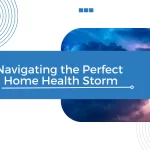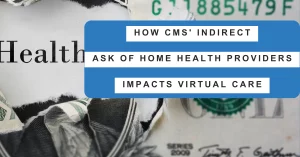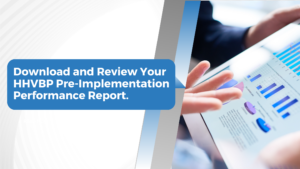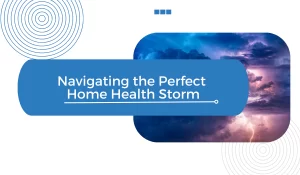
As the landscape of home healthcare evolves, agencies face the challenge of delivering high-quality care while efficiently managing resources and expenses. Balancing these priorities requires strategic navigation, but there are proven approaches that can help agencies chart a course to success. By leveraging policy changes and technological advancements, owners and operators can implement tailored systems and strategies to achieve financial stability and prioritize patient care. With the right tools and mindset, agencies can thrive in this dynamic industry.
In this blog post, Nora Silver, RN, Director of Clinical Strategy and Initiatives at Telos, shares insights on four opportunities that she has observed as overlooked or undervalued through meeting with hundreds of home health agencies since joining Telos in August of 2022.
Nora has 29 years of experience as a registered nurse and has worked in home health care for over 22 years. Before joining Telos, she served as an administrator of a home health, hospice, and palliative care organization for 12 years, overseeing a team that cared for an average of 450 patients per month.
1. Include the Patient’s Perspective in the Plan of Care
One of the most important things you can do to engage patients and caregivers in their care is to develop an individualized care plan. While the conditions of participation require patients and caregivers to provide input into their patient-specific plan of care, this should not be viewed as a mere regulatory obligation.
“When patients are able to provide their perspectives and input regarding their personal care goals, they feel valued and become more invested in their care, resulting in better engagement and satisfaction. Patients are also more likely to provide open feedback and seek out assistance before an exacerbation occurs,” says Nora.
In summary, when patients are actively involved in developing their plan of care, they gain a clearer understanding of their risk of hospitalization and the care objectives of receiving home health care services, leading to better outcomes and more efficient resource utilization.
2. Utilize Ranged Frequency and Patient-Specific Protocols
In 2020, CMS approved ranged frequencies, which allow agencies to incorporate patient-specific protocols to address exacerbations and optimize utilization. By providing visits at the frequency that the patient needs, regardless of the week of care, agencies can improve efficiency and capacity for staff. This can also positively impact patient and staff satisfaction and reduce costs per episode.
Agencies who strategically implement patient-specific protocols (not standing orders) for chronic illness can provide staff with needed interventions that prevent exacerbation, decrease readmission rates, and improve patient and staff satisfaction.
“Maintaining patient care at home can be challenging for home health (HH) clinicians, as they rely on responsive physicians to give in-the-moment intervention orders. However, if clinicians set up patient-specific protocols with physicians at the beginning of care, in-the-moment contact becomes a simple notification rather than a request for intervention. This can be a game-changer for everyone involved,” explains Nora.
Additionally, Referral sources should have higher satisfaction as they’ll see decreased phone calls needing urgent guidance that could have been avoided if patient-specific protocols were utilized.
3. Integrate Value-add Services that are Frictionless(ish)
Outsourcing services can be a game-changer for home health agencies, but it’s important to choose options that can work with your agency’s existing technical solutions, don’t amplify your staffs workload, and integrate into your day-to-day operations frictionless(ish). Some examples of these value-add services include OASIS review and coding, revenue cycle management, pre-claim review, and virtual care.
“As the administrator of a home health, hospice, palliative care, and DMEPOS for 12 years, one of the most difficult operational decisions I faced was outsourcing OASIS review and coding. However, we found an outstanding partner in Jnon Griffin and SimiTree, and the decisions turned out to be one of the best decisions I made for the organization” says Nora Silver.
By utilizing outsourced services, Nora was able reduce administrative tasks, access industry experts, strategically redistribute resources, and reduce costs.
4. Drive Outcomes with Actionable Data
The reliance on OASIS data and clinician documentation at closed episodes can lead to significant shortcomings for home health agencies aiming to take a proactive approach to care and operations. Moreover, clinician documentation is often delayed and potentially critical information is buried in the visit notes, requiring additional manual work.
To this end, virtual patient care and engagement solutions, such as Telos’ Care Navigation program, can be a highly beneficial way to access actionable information. With Telos, agencies can select specific patients to enroll, customize alerts, and provide patients with additional weekly touch points, ensuring that they are constantly collecting relevant data that is up-to-date and reflects the patient’s perception of their current care progression. By incorporating patient-reported data into their operations, home health agencies can deliver high-quality care, improve outcomes, and enhance patient and staff satisfaction while being cost-effective.
“Access to actionable information reported directly from patients throughout episodes of care, between OASIS assessments, is a game-changing opportunity for the home health industry. It enables HHAs to establish a constant feedback loop, allowing for quick adjustments when necessary and empowering care teams to drive agency initiatives,” notes Nora.
Conclusion
While home health agencies certainly face their share of challenges, there are strategic opportunities available for savvy agencies to seize. By effectively engaging patients and caregivers, optimizing resource utilization, and reducing costs per episode, agencies can drive better outcomes while keeping patients and staff happy.
Whether you’re interested in learning more about Nora’s experience implementing these opportunities as a home health administrator, or you want to explore what Telos is doing to help home health agencies achieve better outcomes, we’d love to hear from you. To schedule an introductory meeting at a time that works best for your schedule, simply send Nora an email at [email protected] or use the calendar below.
Let’s work together to improve patient care!




